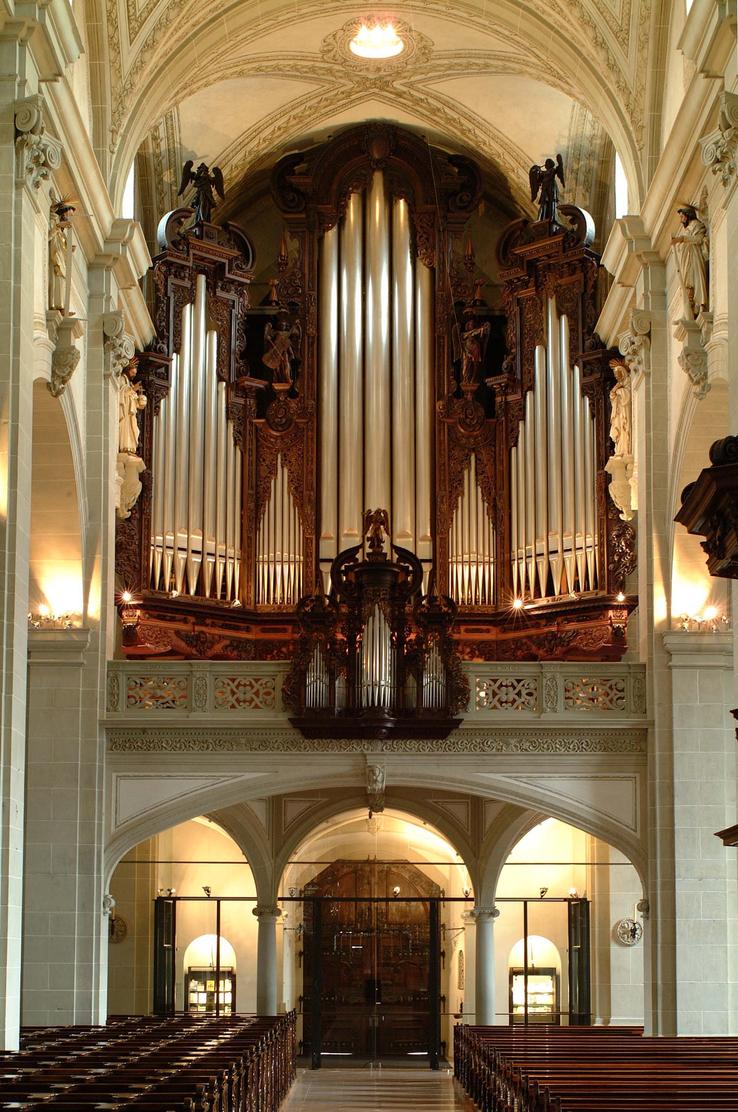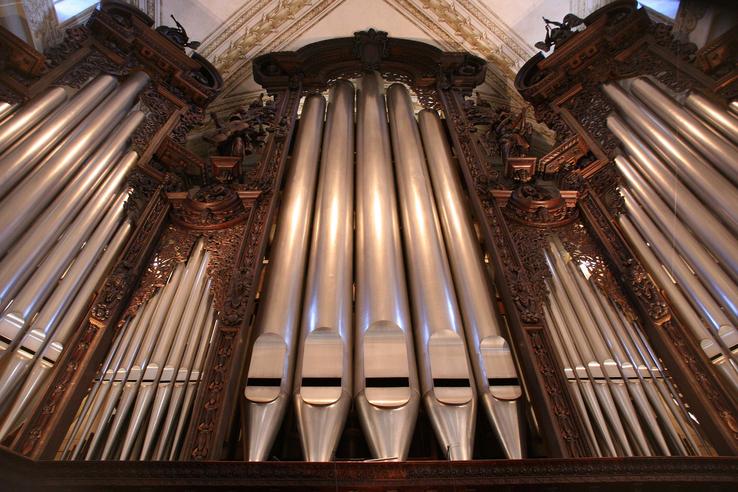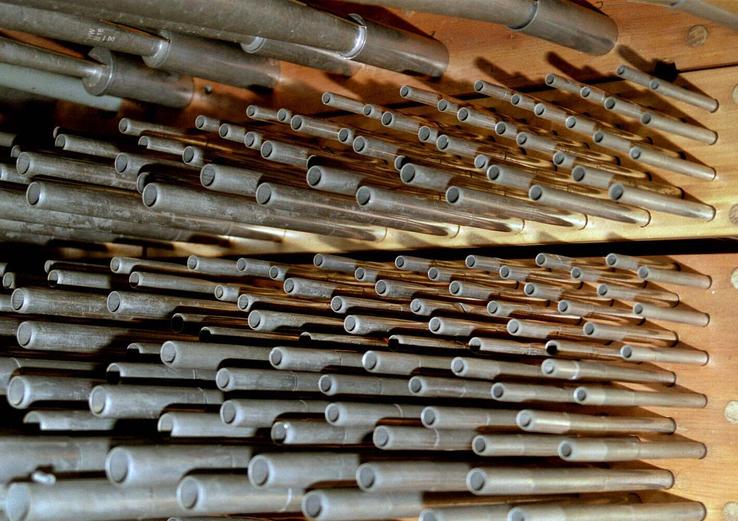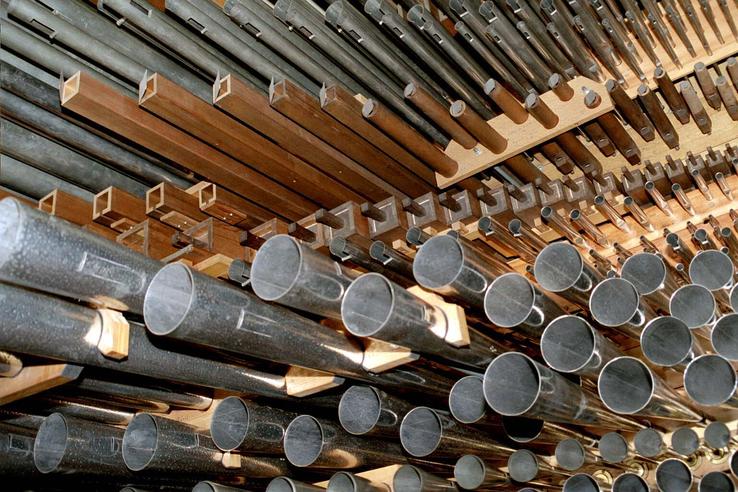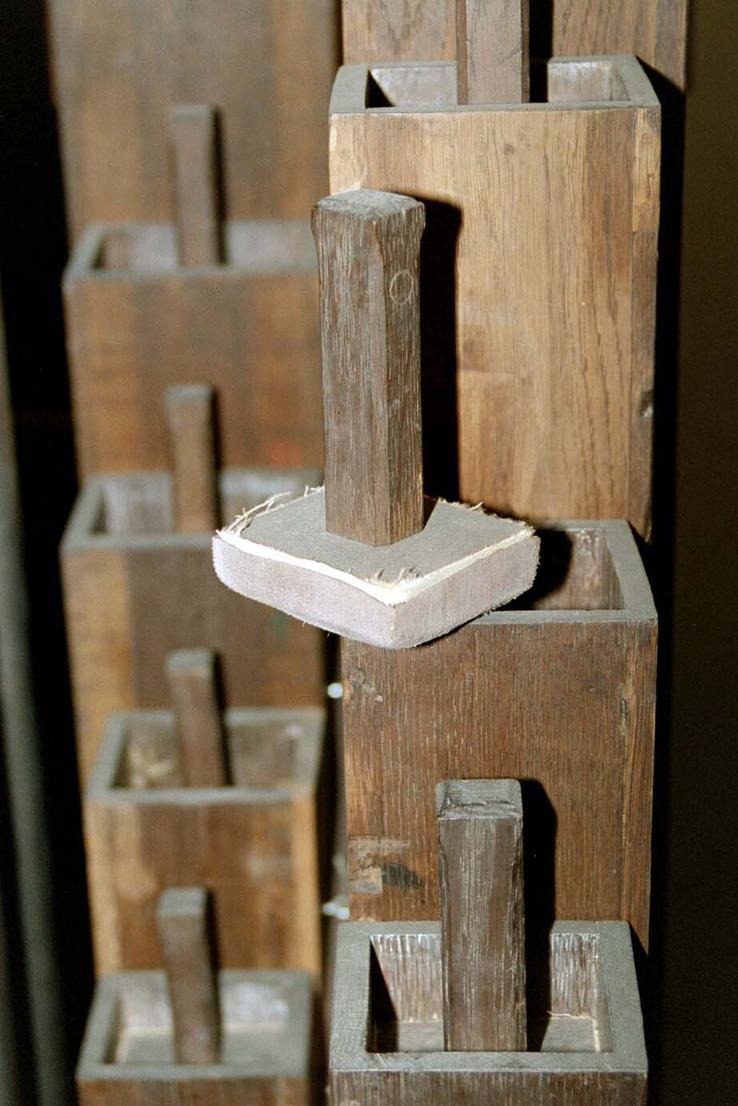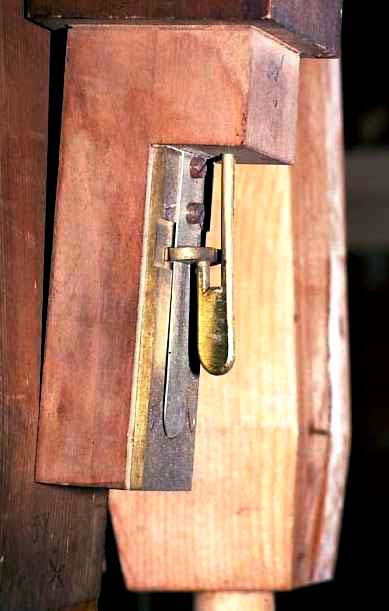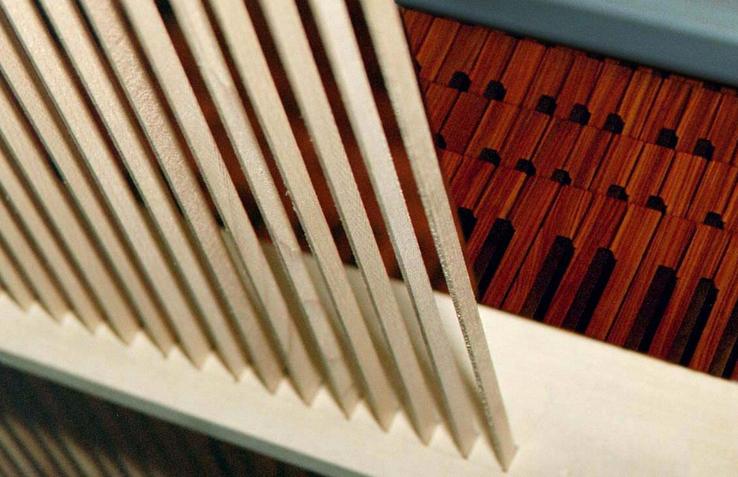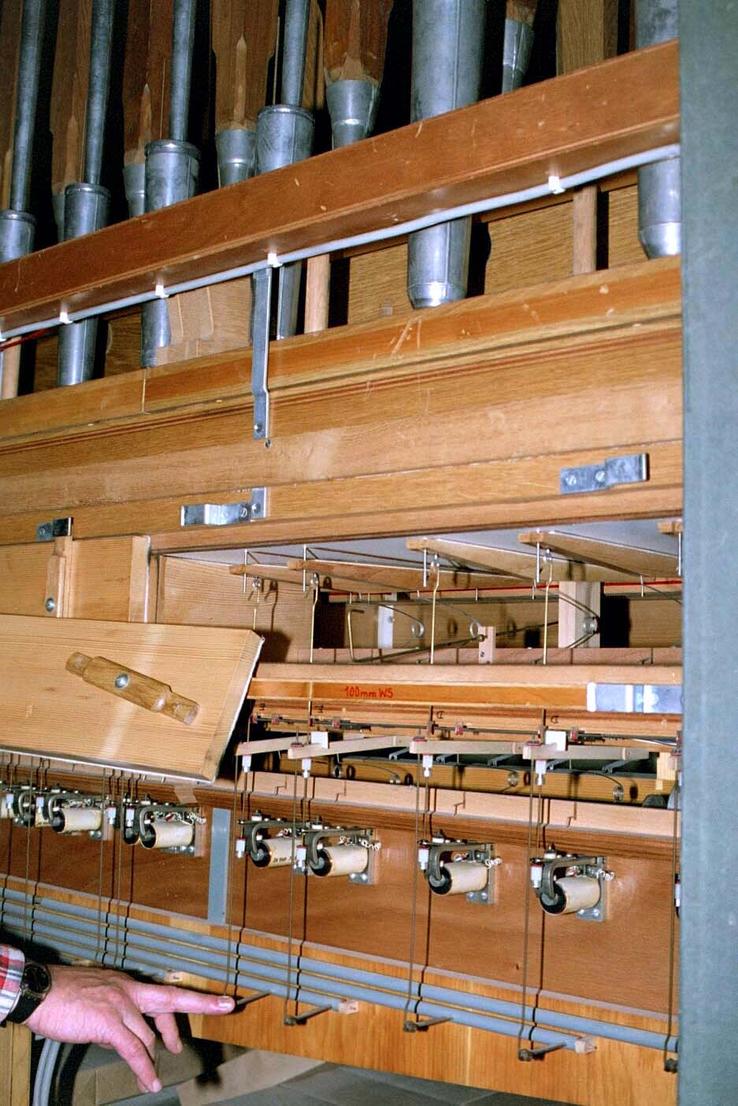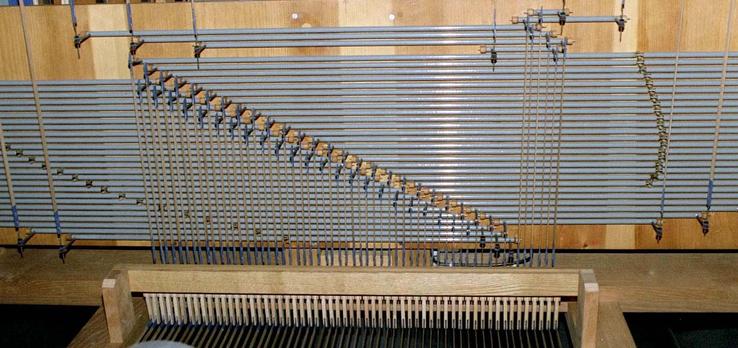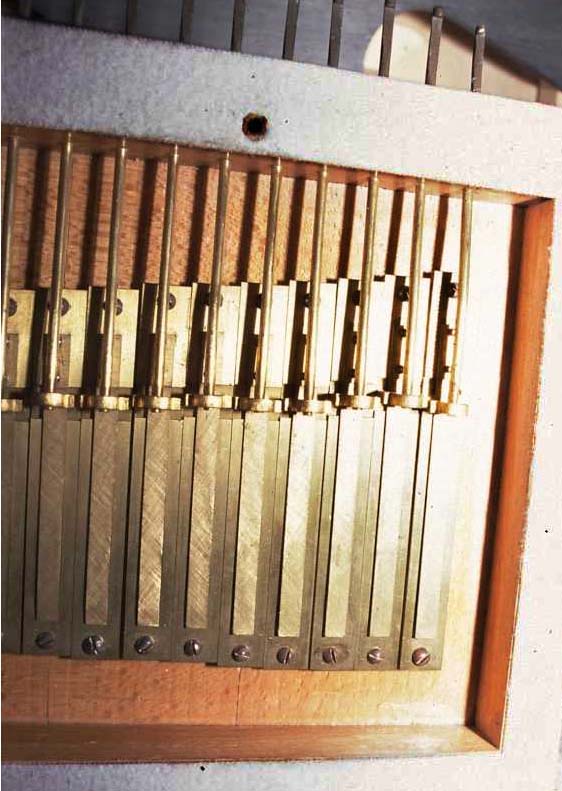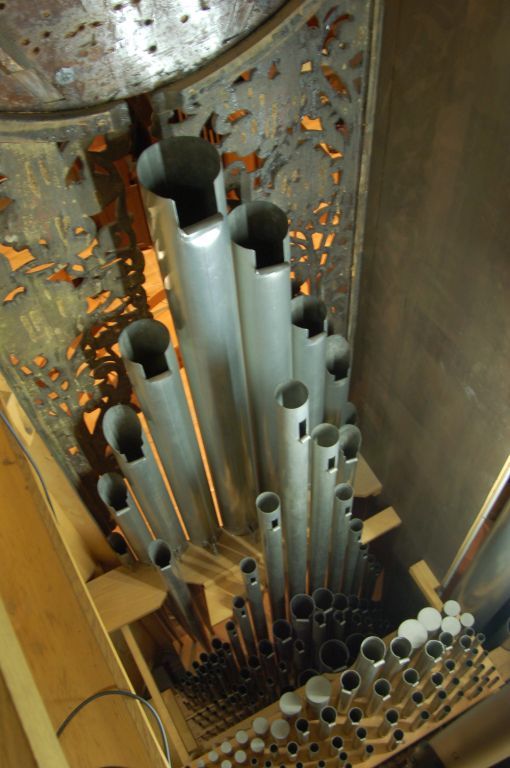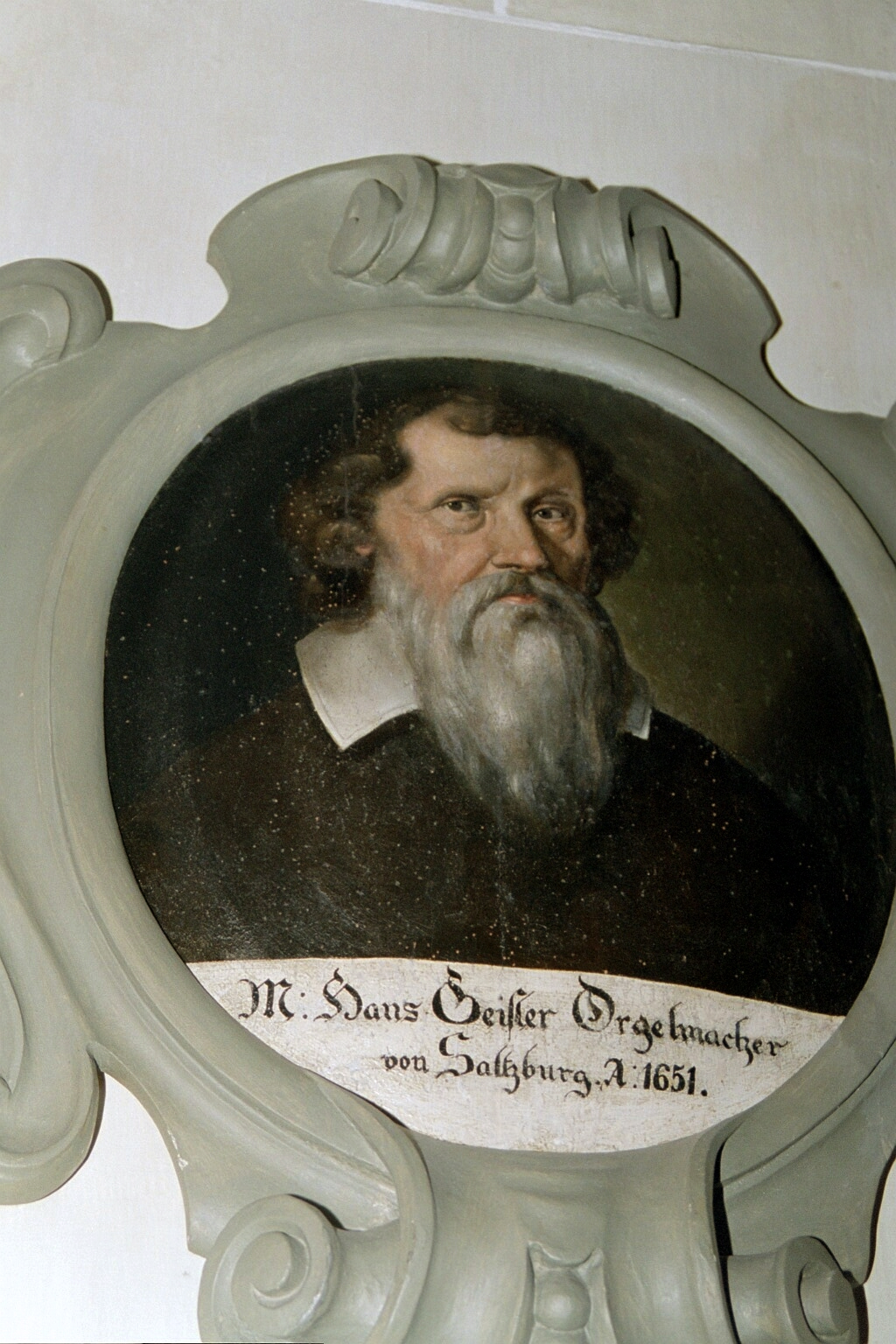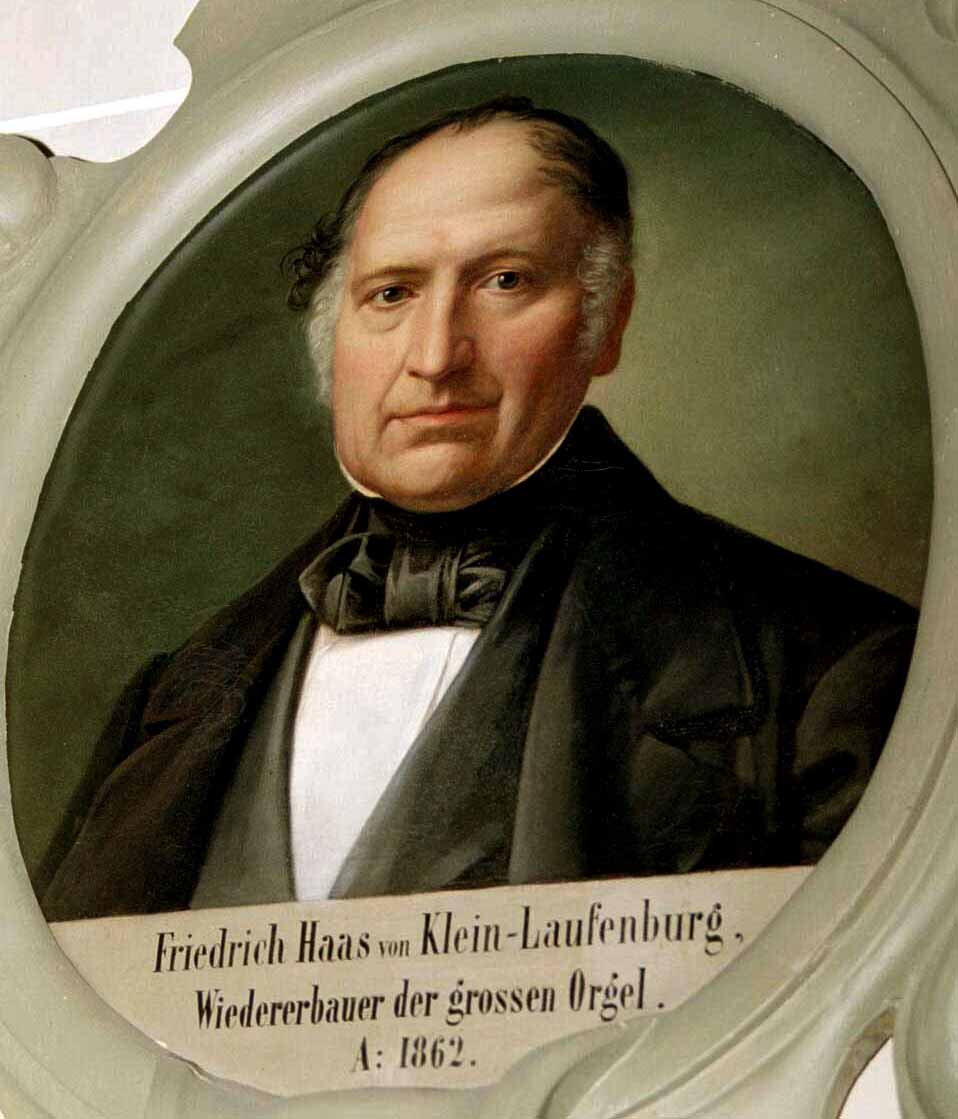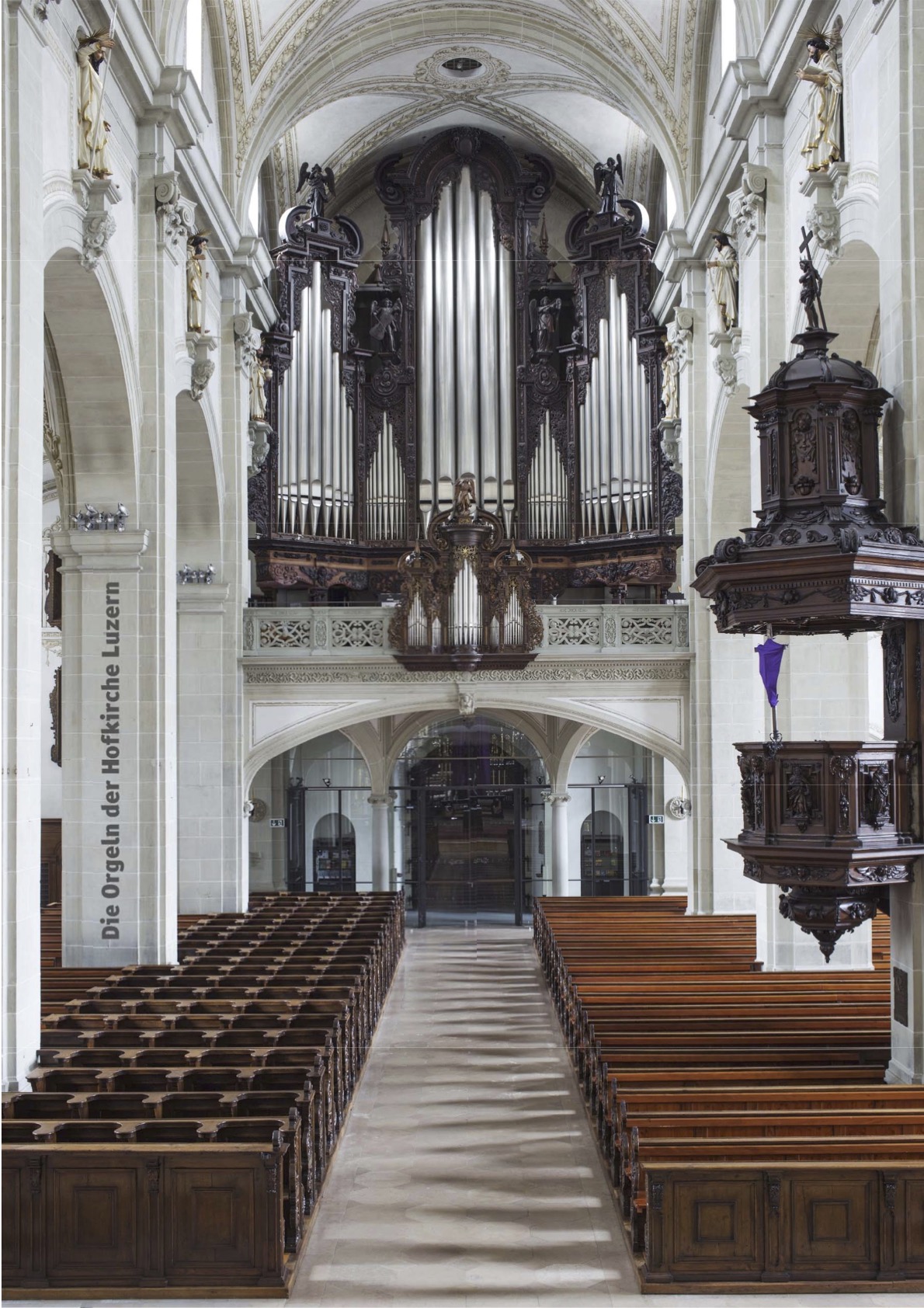
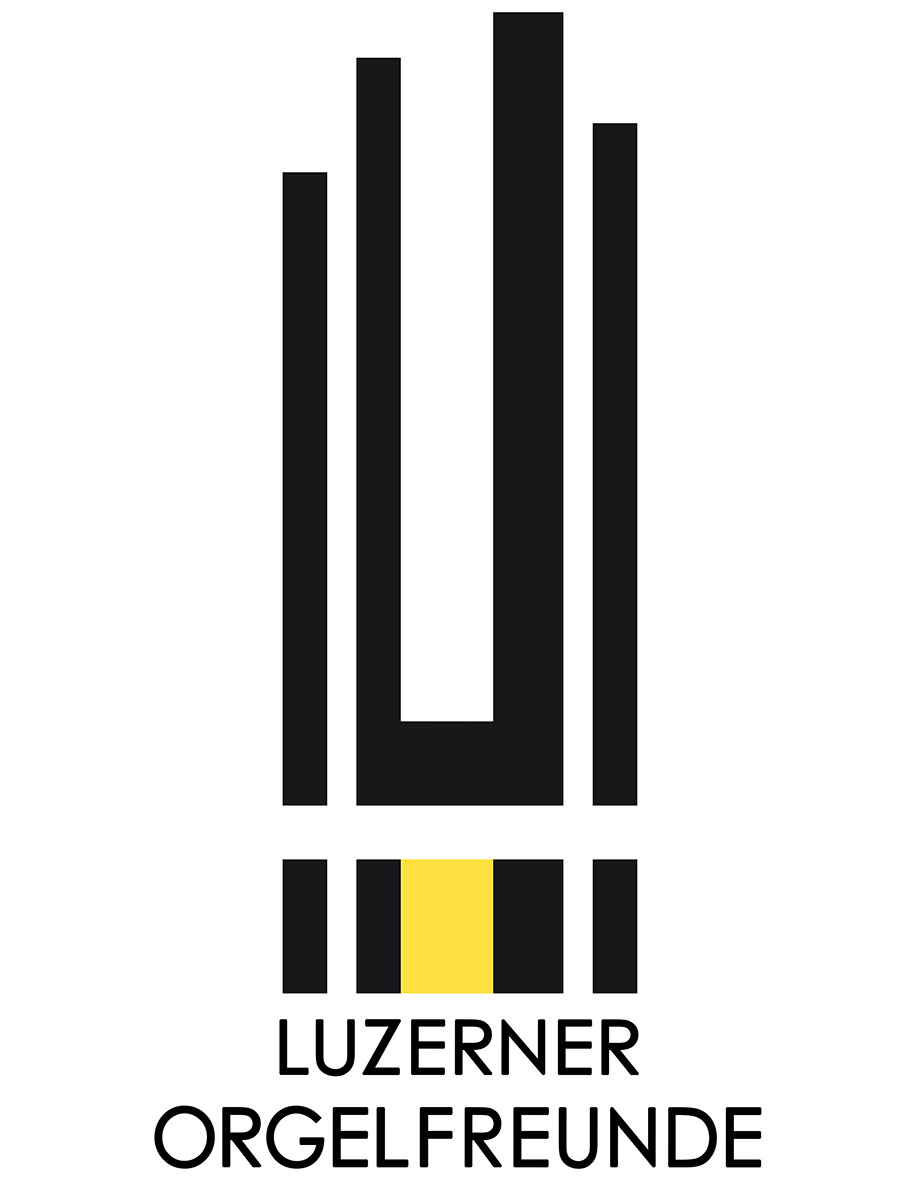
Mark Twain at the Hof Organ concert
"The Hofkirche is famous for its organ concerts. All summer long tourists stream into this church towards 6 o' clock in the evening, pay their francs and listen to the noise. They don't stay to listen to the whole programme but stand up and stamp across the booming stone floor, crossing paths with those who arrive too late and noisily enter. The tramping of those coming and going lasts almost the whole concert and is underlined by the continuous slamming of the doors and the coughing, barking and sneezing of the masses.
Meanwhile the Great Organ roars and crashes and booms away and does what it can to prove that it is the largest and loudest organ in Europe and that a small narrow box of a church is the best place to assess and honour its power.
It is true that occasional quiet and merciful passages can be heard but the tramping of the tourists allow only a faint impression of these to be snatched now and again. Then the organist lets rip with another avalanche of sound."
Mark Twain, A stroll through Europe (1878) Ges. Werke III, München 1966, S. 805
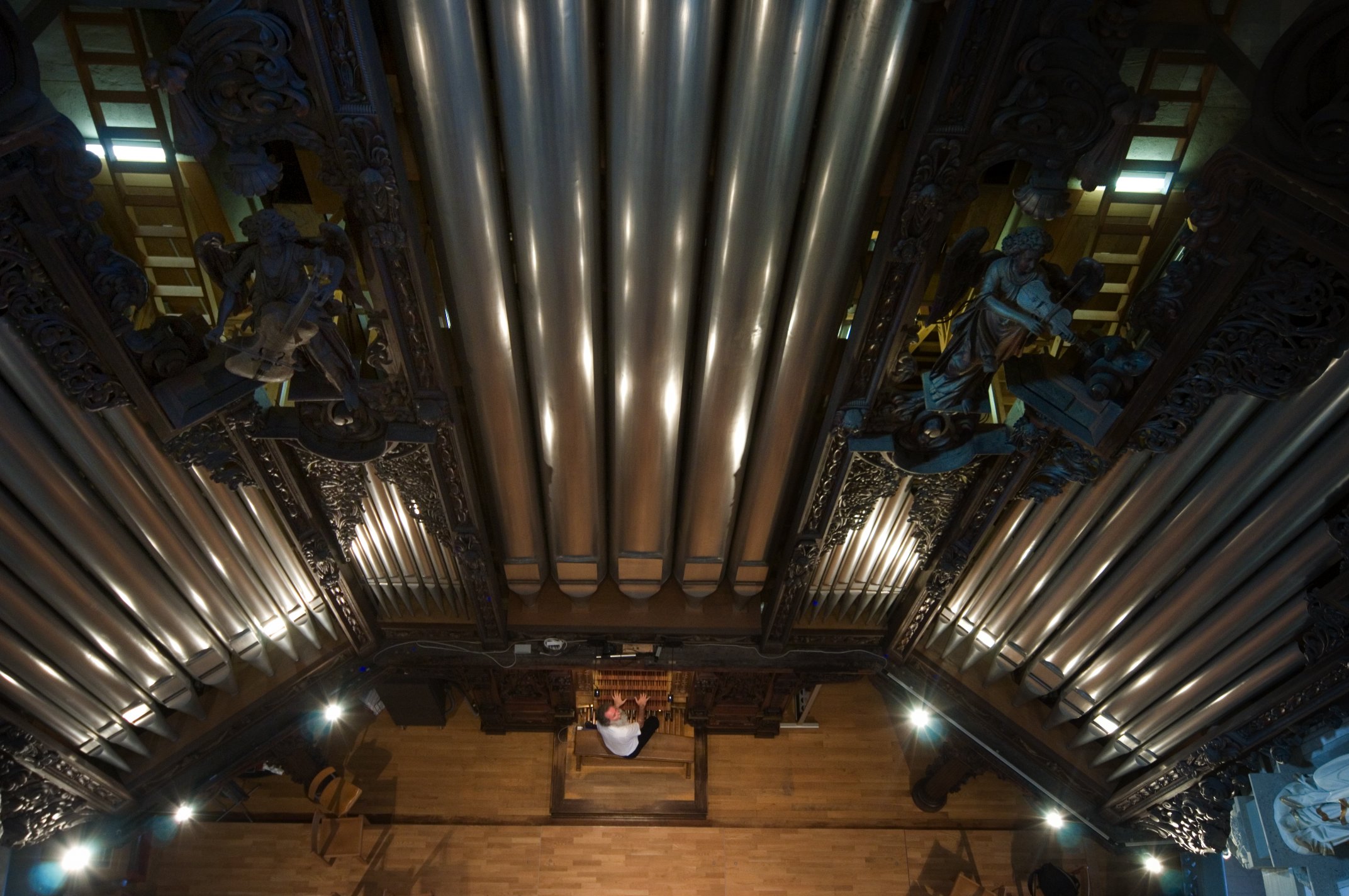
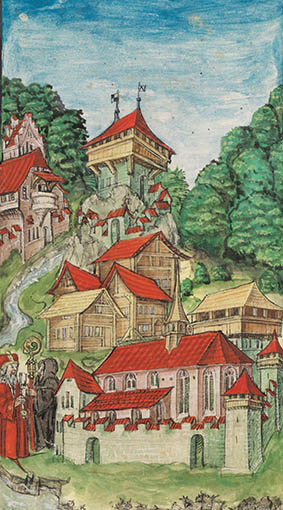
Historical facts about the Great Hof Organ
For the Gothic church which preceded the current Hofkirche sources of information concerning organs exist from a very early time. In the years 1378 and 1433 the position of organist is mentioned. Two organs are known of from this time, one of which having been built in 1429.
In 1488 the Canons request funding from the City of Lucerne for a new organ and receive 50 Gulden. This instrument, built in 1429, was placed in the north side- nave, above the doorway to the Chapel of our Dear Lady.
In 1472 the position of Organist, usually held by a member of the clergy, received further mention.
The second large organ was built in 1534 for 8000 Gulden and was positioned above the first ceiling on the west wall of the middle nave. It was an organ with Hauptwerk, Rückpositiv and Pedal.
Werner
Endner 29.12.2005
Download Complete Text in German
"The Organs of the Hofkirche Lucerne"
The brochure can be downloaded here as pdf or is available in printed form from our Secretary.
Text and Layout: Dieter Utz
Images: Orgelbau Kuhn AG and Nique Nager, Lucerne
Publisher: Verein der Orgelfreunde der Luzerner Hofkirche
Price: CHF 5.00
To download the English translation please follow this LINK
zum Download auf das Bild klicken

The Great Hof Organ (1648-2015)
Built 1640 by Hans Geisler and enlarged 1862 by Friedrich Haas, modified in 1972-1977 by Orgelbau Kuhn, restored and enlarged.
In the organ facade of 1640 stands the largest (10,7 Meter) and heaviest (383 kg) organ pipe in the world from its time. The total weight of the organ is around 30 tonnes.
The 7374 pipes are shared across 111 stops (tone colours) and are arranged on slider windchests (Fernwerk und Echowerk: cone chests) over five manuals and the pedal.
Integrated in the Fernwerk is the world's only rain machine (brass and wood barrel containing metal balls), built in 1862 by Friedrich Haas and preserved in its original condition. Incorporated in the current Hof Organ are 19 stops from Johann Geisler's (organ builder from Salzburg 1648) organ; 50 stops are from Friedrich Haas, 1862 (organ builder from Kleinlaufenburg-Basel, later Lucerne): this means that almost 2/3 of the stops are historical material.
The main case and the carvings from oak were made by Niklaus Geisler from Lucerne (1640). The case of the Rückpositiv was reconstructed in 1972. The case of the Echowerk was constructed in 2015 and designed by Andy Raeber.
The three free reed stops built by Friedrich Haas in 1862 were restored in 2001 and placed in the sound chamber of the Fernwerk. These are Romantic tone colours, similar to those of a harmonium or accordion. The quality of the craftsmanship of these pipes is deemed as unique; the free reed stop in the Haas organ of Thalwil is based on the original from the Lucerne Hof Organ.
With the Echowerk, which was inaugurated in 2015, further historical pipes from the years 1862, 1898 and 1919 could be incorporated into the "organ arena" of the Hofkirche. These pipes were clearly documented and exceptionally well preserved. The best method to secure the further preservation of these precious 150-year-old pipes is in incorporating them in a functional instrument. Thus the Echowerk not only fulfills a musical function, but also a historical one, in preserving historical material in the best possible manner. And thanks to the modern case made of wood and glass, these valuable pipes also serve an educational purpose. Effect stops such as the Zimbelstern (turning star), Bätruef (call to prayer), Sennschellen (cowbells) and Alphorn promote a historical but also a local heritage, prayers such as Alpine Blessing being an integral part of our folklore.
Luzern 2015 | Wolfgang Sieber
Gallery of the Great Hof Organ
